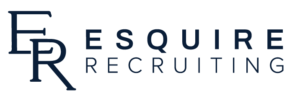LinkedIn Profile: Part 2!
Welcome back to Part 2 of evaluating your LinkedIn profile. Let’s keep reading below to wrap up this crucial topic that impacts candidates at all phases of their career lifecycle. Whether actively seeking a new role, accelerating at one company throughout several years, or simply building a profile from scratch, your LinkedIn page serves as your personal, online introduction to the world of recruiting. So, how can you make sure that you won’t be passed by amongst a growing pool of candidates and a never-ending list of ‘open jobs’ at your fingertips?! Find out below…
LinkedIn Profiles: Part 2!
- Education: Brief but impactful! Your education section will display the University you attended/graduated from, completed major(s), as well as student organizations you participated in. While these factors on their own may not determine a future job, they will link you to an expansive network of people with similar experiences! Not only can you view which alumni work for certain companies, but sharing a like-minded value (for example membership in Women in Business), will help establish a commonality ahead of networking conversations.
- Important Tip: Make sure to expand on the societies and student organizations you participated in in the ‘Organizations‘ section! The education blurb is simply to state the title of a student org., not the description.
- Volunteering: Below the education section, you’ll find a volunteering space designated separately on your profile. Make sure to document any volunteering experiences you’ve had; this is also a great way to communicate your values. Make sure to keep up with volunteering efforts when and where you can, as more recent experiences undoubtedly hold more value (as opposed to a high school fundraiser you participated in for a single day). We also encourage you to dip deep and better understand your own values. Especially after graduation, it’s super special and impressive to recruiters when candidates have established a relationship with a certain charity or volunteering opportunity over the course of several years. Not only does this showcase your loyalty, but displays true work and a strong moral compass.
- Skills: You can easily draw on skills from your resume! Do you have a section at the bottom of your resume to define skills and accomplishments? If not, now is a great time to start and track the competencies you’ve picked up along your career. Think of specific platforms like Excel and Microsoft Office or ‘non-tangible’ skills like interpersonal communication, presentation confidence, and even elements that may have only manifested in hobbies like ‘creative writing’ or ‘storytelling’ will help shape who you are and what you will bring to a future organization!
- Important Tip! Skills can be endorsed by your professional connections, so make sure they are relevant to previous experiences and accomplishments if you’re seeking an extra boost for validity.
- Honors and Awards: In the same way that skills reflect the final portion of your resume, honors and awards do the same. Make sure to ‘humbly brag’ about your most prized accomplishments in this section. Not sure what’s appropriate? Think of memberships to honor societies, scholarships, Dean’s list achievements, ‘President’s Awards’ at companies, or other distinguishments you may have obtained during your academic or professional career that will give weight to your performance as a candidate.
- Languages: Pretty self-explanatory, we encourage you to only note your language competency if it is up-to-date, and you are confident enough to speak, write, or read another language in a corporate setting. If you’re simply able to navigate a city and engage in light conversation in another language, it may be best to leave that off of your profile and instead discuss it in an interview if it becomes relevant.
- Interests: You’ve made it to the bottom of your profile, congratulations if you’re still reading this article! Finally, we encourage you to scroll and navigate through LinkedIn as you are building your profile so that you can “like and/or follow” companies, topics, people, brands, news outlets, and anything else that interests you. etc. Your interests serve as yet another way to find common ground with someone as you reach out to connect and initiate informational interviews or networking conversations!
Searching for a new position? Check out our open jobs list!



